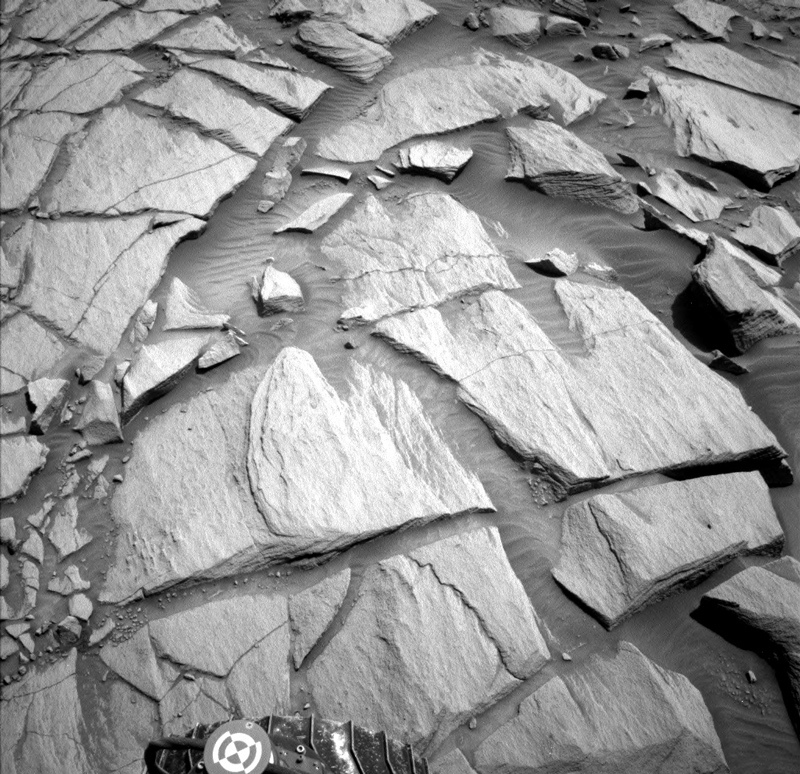2 min read

As the Edinburgh drill campaign continues, and the CheMin instrument awaits the first taste of the bedrock in front of us, the science team focuses on filling out Greenheugh pediment observations as well as responding to early results we've already received.
Having multiple observations of the same rocks and expanding datasets to cover more area helps put high value results from the drill campaign in context. We don't get to do this too often, except when we stop for a few sols. Also, it makes sense to keep the other instruments busy and get the most science we can while we wait for instruments like SAM and CheMin to process data, which usually takes a few days (it's complicated!).
On sol 2715, after finding some interesting chemistry on target "Eaglesham," it would've been a shame if we didn't take another look! A ChemCam observation called "Eaglesham2" takes a vertical sample over the crossbedding (rock layers that intersect by angle) in that rock. There will also be ChemCam shots into the drill hole to sample ever so slightly below the surface, including an RMI Z-stack (makes a very clear image).
Mastcam will takes some images of these targets too. There's great interest to document the washboard-like pattern we see from orbit on the Greenheugh pediment as well as the prominent ridge on top of it, since we have such a unique and amazing view. ChemCam will take more long distance RMIs of the washboard pattern and the interface between the ridge and the washboard, which we call "Skelkirkshire." Skelkirkshire shows layers of boulders and probable light-toned sandstones, which tells us something about how the ridge formed. CheMin will get its first Edinburgh sample portion. DAN, RAD, and REMS makes observations as well.
On Sol 2716, we get a chance to image Mars' dreadful moon Deimos with Mastcam and extend previously taken mosaics across the Greenheugh pediment ridge and surrounding bedrock in front of us. Atmospheric observations include Mastcam tau (measures dust in the martian air), crater rim extinction, Navcam super horizon cloud search, and REMS observations for temperatures, winds, and pressure.
Just like our rover instruments, stay safe and healthy!
Written by Fred Calef, Planetary Geologist at NASA's Jet Propulsion Laboratory







